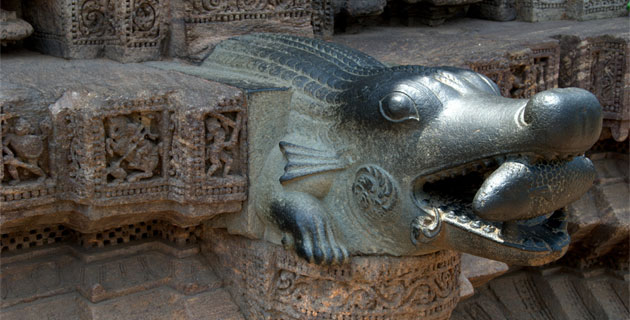

Most of the architectural figures which made the temple so famous, were completely buried under the debris and sands, till the early 19th century. The existence of these beautiful lions, wheels, horses, elephants and the simhasana of Sun God being not known to the people, the visitors who came in these days could not even enjoy the halt of its beauty.
Narasimhadeva's desired temple was built in the form of a huge Ratha (chariot), having twelve pairs of wheels exquisitely carved out in the northern and southern sides of the plinth masonary and drawn by a team of seven spirited horses, speeding as if, through the heaven.
 Royal Guard of Konark - Lion Upon Elephant Upon Man
Royal Guard of Konark - Lion Upon Elephant Upon Man
The eastern gateway which is the main entrance to the temple compound, is decorated with Gajasimha (Lion upon an elephant) images, with outward faces, installed on two high stone benches on either side of the passage. Two high stone benches are also provided at the inner sides, possibly meant for the guards to sit. According to the Hindu mythology, the lions resemble the pride, elephants resemble the wealth and both of them kill the human. The entire figure is made out of one piece of stone.
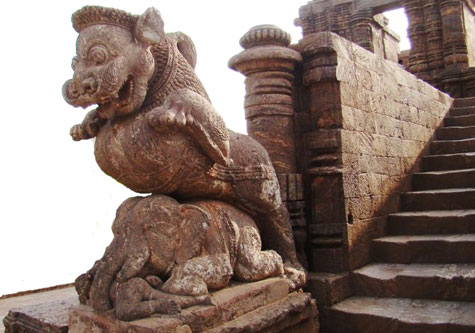
 Great Wheel of Konark
Great Wheel of Konark
The entire temple is made in the form of a huge chariot of Sun God with 24 wheels (12 pairs). The Konark wheel is the primary attraction of the temple. The wheels of the chariot have exquisitely decorated around their axles and peripheries. The art work of every wheel is different. The wheels of the chariot are also symbolic and have been interpreted as the 'Sun Dial'. Please visit this page for more information about Konark wheel.
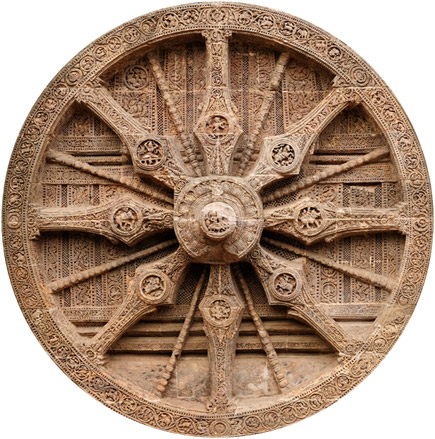
 War Horses of Konark Temple
War Horses of Konark Temple
There are two gorgeously carved war horses in front of the southern side of the Konark Temple. They are each 10 feet long and 7 feet high. The sculpture depicts each of them with its massive strength and energy crushing down the warrior. This figure of war horse of Kanark has been accepted as the symbol of the state Government of Odisha and her former martial glory.
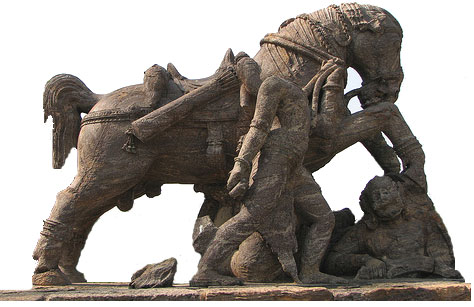
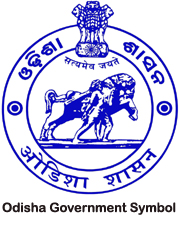
 Elephants of Konark Temple
Elephants of Konark Temple
The figures of elephants which had originally stood on the side walls of the flights of steps at the northern and southen sides of the Jagamohana, were found amidst the confused mass of debris. They are however, installed, in masonary platforms nearer to the compound walls, facing the main temple, but in fact, they are to face outwards, to welcome people coming in.
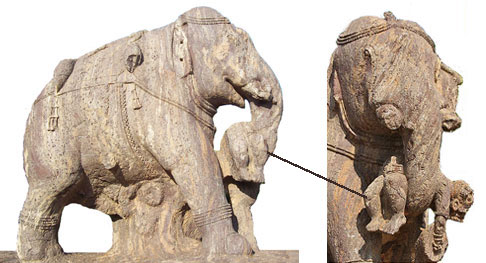
 Seven Horses of Konark Temple
Seven Horses of Konark Temple
The entire temple structure is made in the form of a huge chariot with 24 wheels and is pulled by a set of seven galloping horses (4 on the right side and 3 on the left side). The representation of these seven horses has been explained in different ways by many.
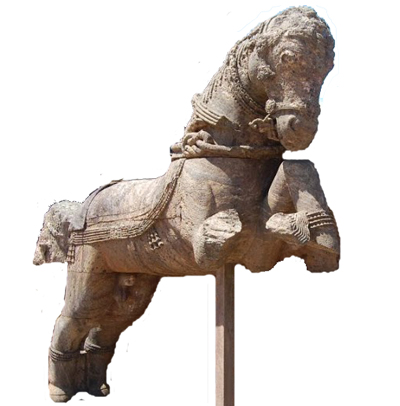
 Simhasana (Seat) of the Presiding Deity
Simhasana (Seat) of the Presiding Deity
The simhasana (seat of the presiding deity) made of chlorite stone (a kind of volcanic rock) and beautifully carved all over, is still in existence within the sanctum. Its base and sides are decorated with beaded borders, enclosing rows of elephants and various scenes from day-to-day life, such as women carrying offerings, musical instruments and standing in groups with floded hands. The King and Queen are seen sitting in front. The floor of the room is also paved with chlorite slabs.
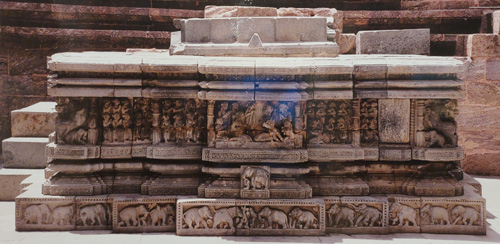
Although the presiding deity is now missing from the place, there is no doubt that the image of the Sun-God, actually occupied the Simhasana, rulling over the innumerable devotees who worshipped him for about four hundred years with all the pomp and glory, which traditionally accompanies the virtuals of worship. Otherwise the beautiful pedestal and the smaller one above it, would not have existed. A semicircular channel was also provided on the pedestal for easy flow of water from the body of the image.